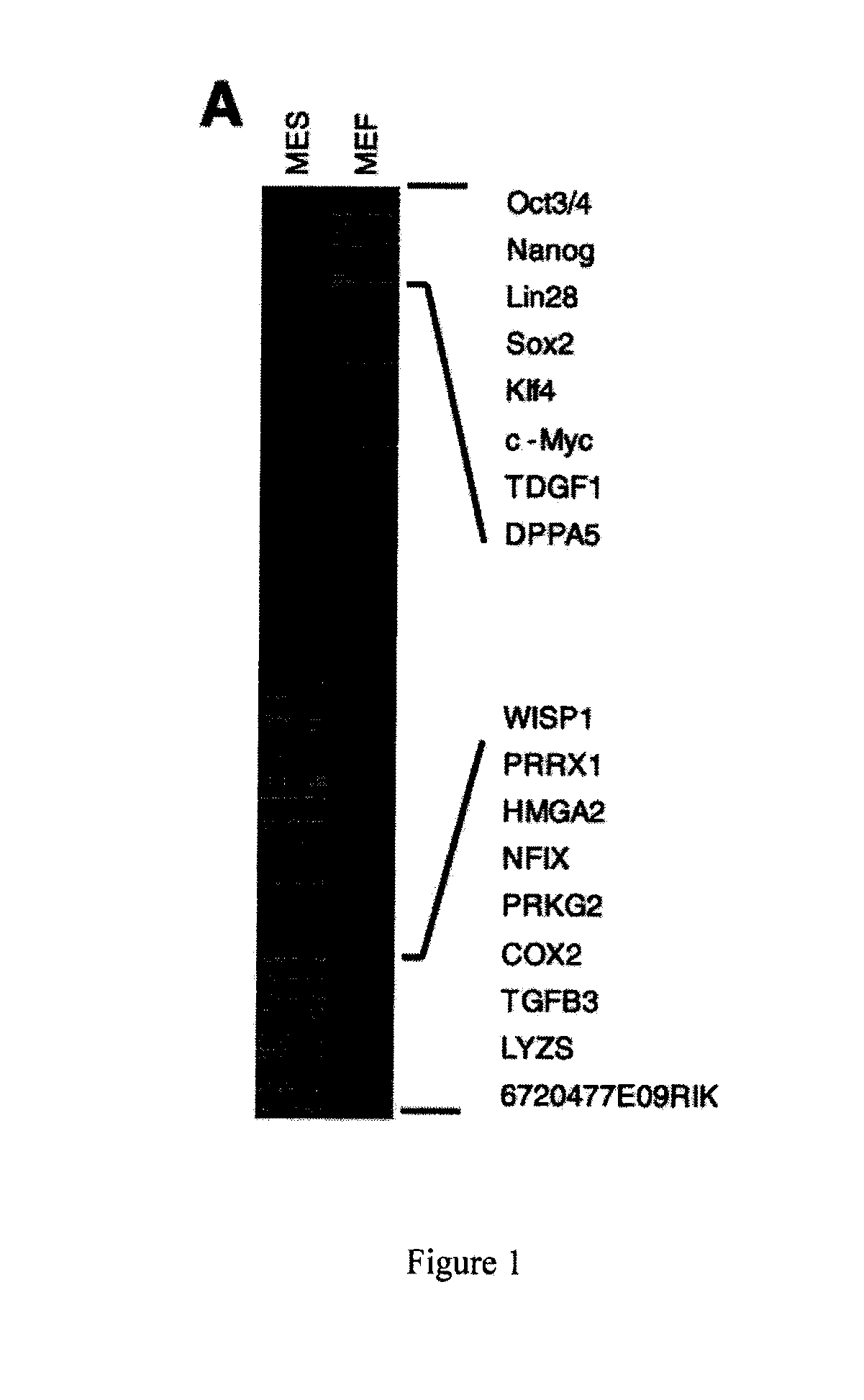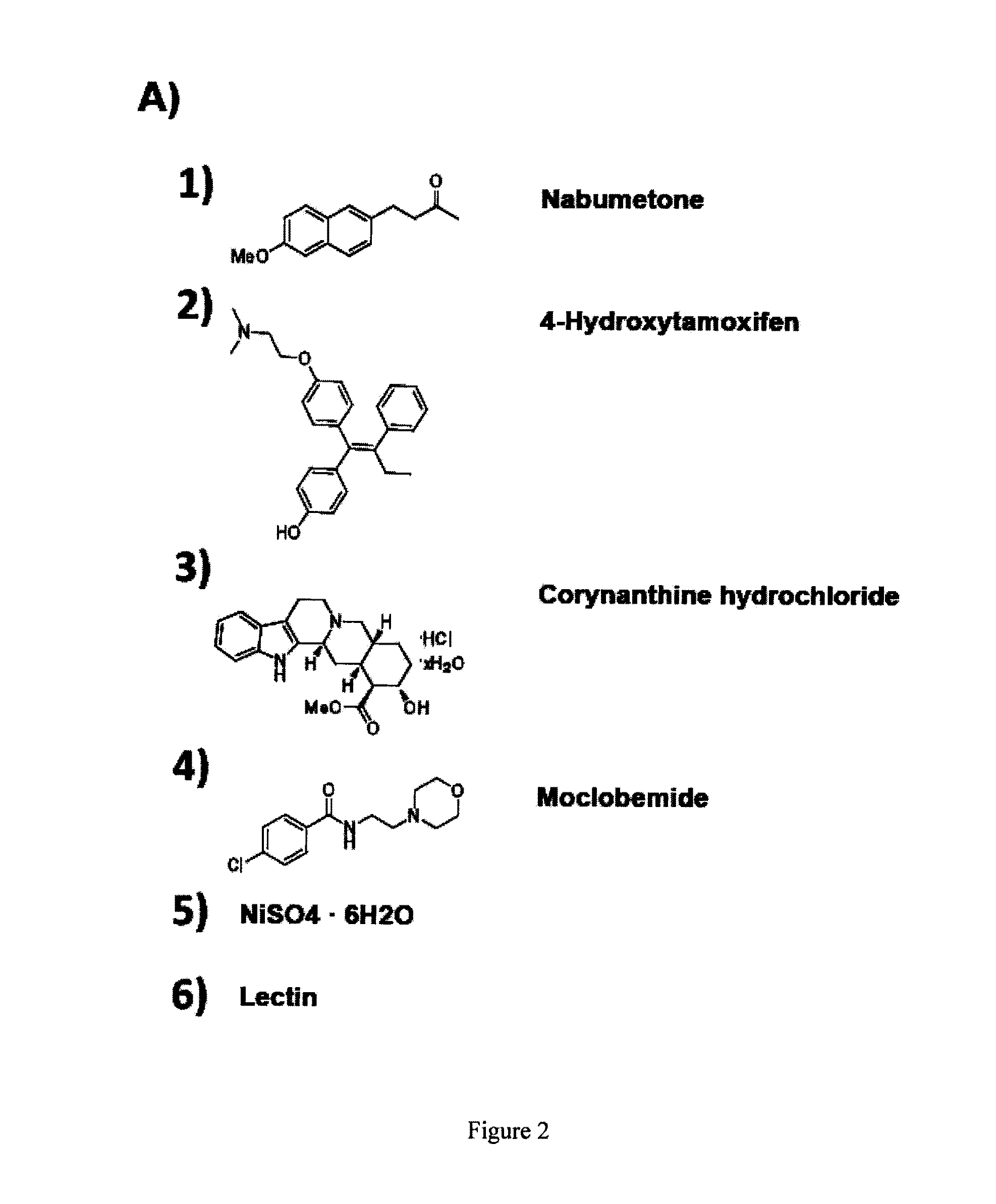Method and compounds for generation of iPSCs
a technology of ipscs and stem cells, applied in the field of induced pluripotent stem cells, can solve the problems of low efficiency of reprogramming, inefficient, and unclear molecular basis of reprogramming, and achieve the effects of avoiding immune rejection, increasing the number of cells, and preventing or reducing the number of cells
- Summary
- Abstract
- Description
- Claims
- Application Information
AI Technical Summary
Benefits of technology
Problems solved by technology
Method used
Image
Examples
example 1
Use of Agents in iPSC Induction
[0069]This example illustrates that down-regulation by siRNAs of several key MEF-specific genes encoding proteins with catalytic or regulatory functions, including WISP1, PRRX1, HMGA2, NFIX, PRKG2, COX2, and TGFβ3, greatly increased reprogramming efficiency. Screening results showed that: (a) the non-steroidal anti-inflammatory drug (NSAID) nabumetone acts as a COX2 inhibitor to enhance reprogramming; (b) the anti-cancer drug OHTM can replace Sox2 during reprogramming by inducing endogenous Sox2 expression; and (c) nabumetone can replace c-Myc or Sox2 in reprogramming without compromising self-renewal and pluripotency of derived iPS cells.
[0070]The following materials and experimental methods were utilized.
[0071]Mouse Embryonic Fibroblast (MEF) Derivation.
[0072]Oct4-EGFP MEFs were derived from the mouse strain B6; 129S4-Pou5f1tm2(EGFP)Jae / J (The Jackson Laboratory, Bar Harbor, Me., USA, on the world wide web at jax.org / ; stock #008214) following the pr...
PUM
| Property | Measurement | Unit |
|---|---|---|
| real time qRT- | aaaaa | aaaaa |
| real time qRT- | aaaaa | aaaaa |
| colony morphology | aaaaa | aaaaa |
Abstract
Description
Claims
Application Information
 Login to View More
Login to View More - R&D
- Intellectual Property
- Life Sciences
- Materials
- Tech Scout
- Unparalleled Data Quality
- Higher Quality Content
- 60% Fewer Hallucinations
Browse by: Latest US Patents, China's latest patents, Technical Efficacy Thesaurus, Application Domain, Technology Topic, Popular Technical Reports.
© 2025 PatSnap. All rights reserved.Legal|Privacy policy|Modern Slavery Act Transparency Statement|Sitemap|About US| Contact US: help@patsnap.com



